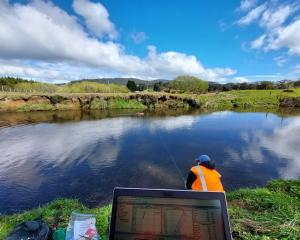
The Pukerau Cemetery Support Group and a few Gore councillors helped the children plant over 1000 daffodil bulbs in front of Pukerau Cemetery last week and, a few days later, they did a workshop on how to craft the crosses.
The support group secretary Margaret Pullar said this was the second time they had planted daffodils with the children and they did it to connect the young ones to some home town pride.
"Having the school children participate gives them an investment in the beauty of the district into the future because they will care about something that they have been involved with planting," she said.

The support group have also been dedicated to organising the refurbishment of the cemetery, including a couple of pioneer family graves that had fallen into disrepair.
The marble carved Purvis and Hey family graves were cleaned up and the surrounding wrought iron fencing and concrete was mended, Ms Pullar said.
According to research done by the group, William H. Purvis was the first blacksmith in Pukerau, dying in 1898, and was involved in the town’s school, domain and library committees.

His daughter Lorna was one of the first school teachers in Slopedown, educating her pupils in a hut, their research said.
The Hey family came from Yorkshire in 1880 and Albert Hey and his wife Hannah Martin settled in Pukerau.
The Pukerau Heys’ sons Bert and Ray served in World War 1.
The Hey graves have over 100-year-old vintage roses in their plot, Ms Pullar said, as well as purple-flowering periwinkle.

The graveyard is also home to 16 war service graves, where the flax crosses will be placed before the Anzac day service.
Near the entrance, there is an information kiosk with a list of over 200 names of soldiers from the wider Gore area who fought in wars beginning with the Boer war in South Africa.
The burial ground also has a designated Muslim area, facing Mecca, which is yet to be populated, Ms Pullar said.












